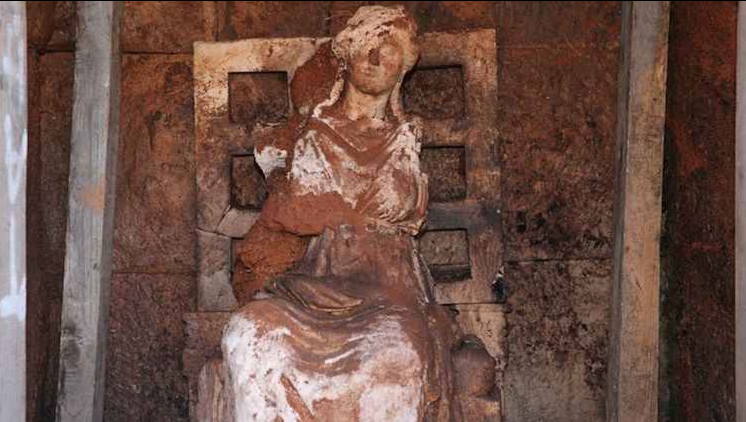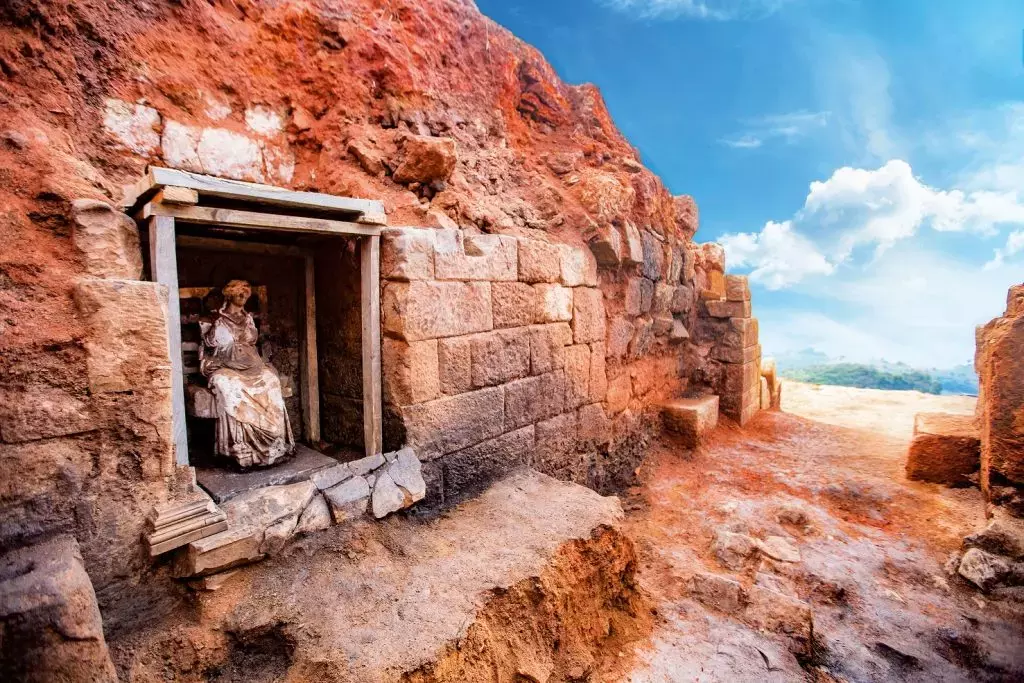A Remarkable Discovery at Kurul Fortress
Archaeologists working at Kurul Fortress in Ordu Province, Turkey, have uncovered a stunning artifact: a 2,100-year-old marble statue of the mother goddess Cybele, seated regally on her throne. The statue, dating back to the Hellenistic period (2nd century BCE), is exceptionally well-preserved, showcasing the artistic and spiritual significance of the time.
Who Is Cybele?
Cybele, also known as the Great Mother, was a central figure in Anatolian religion and mythology. As the goddess of fertility, nature, and protection, she was revered across ancient cultures. Originating in Anatolia, her worship spread to Greece and later Rome, where she was celebrated as the Magna Mater. Statues like this one were often focal points in temples or public spaces, symbolizing her power and nurturing essence.
The Artistic Significance
The statue portrays Cybele seated on a throne, a position symbolizing authority and stability. Her detailed features, from the folds of her garments to the throne’s intricate carvings, reflect the advanced craftsmanship of Hellenistic sculptors. The use of marble emphasizes the importance of the deity, as the material was reserved for significant artistic and religious purposes.

The Historical Context of Kurul Fortress
Kurul Fortress, perched on a rocky hill overlooking the Black Sea, was a key site during the Hellenistic era. Its strategic location suggests it served as both a military stronghold and a cultural hub. Excavations have revealed a wealth of artifacts, including coins, ceramics, and now this extraordinary statue, shedding light on the daily and spiritual lives of its ancient inhabitants.
Religious Practices at Kurul Fortress
The discovery of Cybele’s statue hints at the fortress’s role as a religious center. Worship of Cybele often involved elaborate rituals, including offerings, music, and dance, meant to honor her as the guardian of life and nature. The statue’s placement within the fortress suggests it may have been central to such ceremonies, possibly housed in a temple or shrine.

Broader Implications of the Find
The discovery of this statue not only enriches our understanding of Cybele’s worship but also highlights the artistic and cultural connections between Anatolia and the wider Hellenistic world. It underscores the significance of Anatolia as a crossroads of civilizations, where indigenous traditions mingled with Greek and Roman influences.
What’s Next for the Statue?
The statue will likely undergo detailed conservation work and eventually be displayed in a museum, offering the public a chance to witness this exceptional piece of history. Meanwhile, ongoing excavations at Kurul Fortress are expected to yield even more insights into the lives of its ancient residents.

Conclusion
The unearthing of this 2,100-year-old statue of Cybele is a testament to the rich cultural and religious heritage of Anatolia. It not only provides a glimpse into the artistic brilliance of the Hellenistic era but also deepens our appreciation for the enduring legacy of the mother goddess, a figure who transcended borders and eras.
This discovery is yet another reminder of the treasures hidden beneath the surface, waiting to tell their stories of ancient civilizations.
